Ol and Jen's Excellent African Driving Adventure Part Two: Fish River Canyon to Sossusvlei, Nami
- Jennifer Diaz

- Jun 13, 2019
- 10 min read
I have a confession to make. I lost our driver’s licenses. The last time I remember having them was at the airport in Cape Town, South Africa when we rented our car. I called the rental car company and they didn’t have them. In my defense, when we rented the car we were half asleep after flying all day and anxious about driving on the wrong side of the road.


We had driven across South Africa and were now headed into Namibia. The time had come when I finally had to come clean with Ol. Maybe my timing wasn’t the greatest as we were approaching a police road block. I yelled for Ol to “turn, just turn! I’ll explain later.”



Thankfully we had just entered into the town of Uppington, S.A. and there was a small cafe alongside the road. I told him about the lost licenses and explained my exhaustive searches for them. All we had for identification were the rental car papers with a copy of our drivers licenses and our passports.


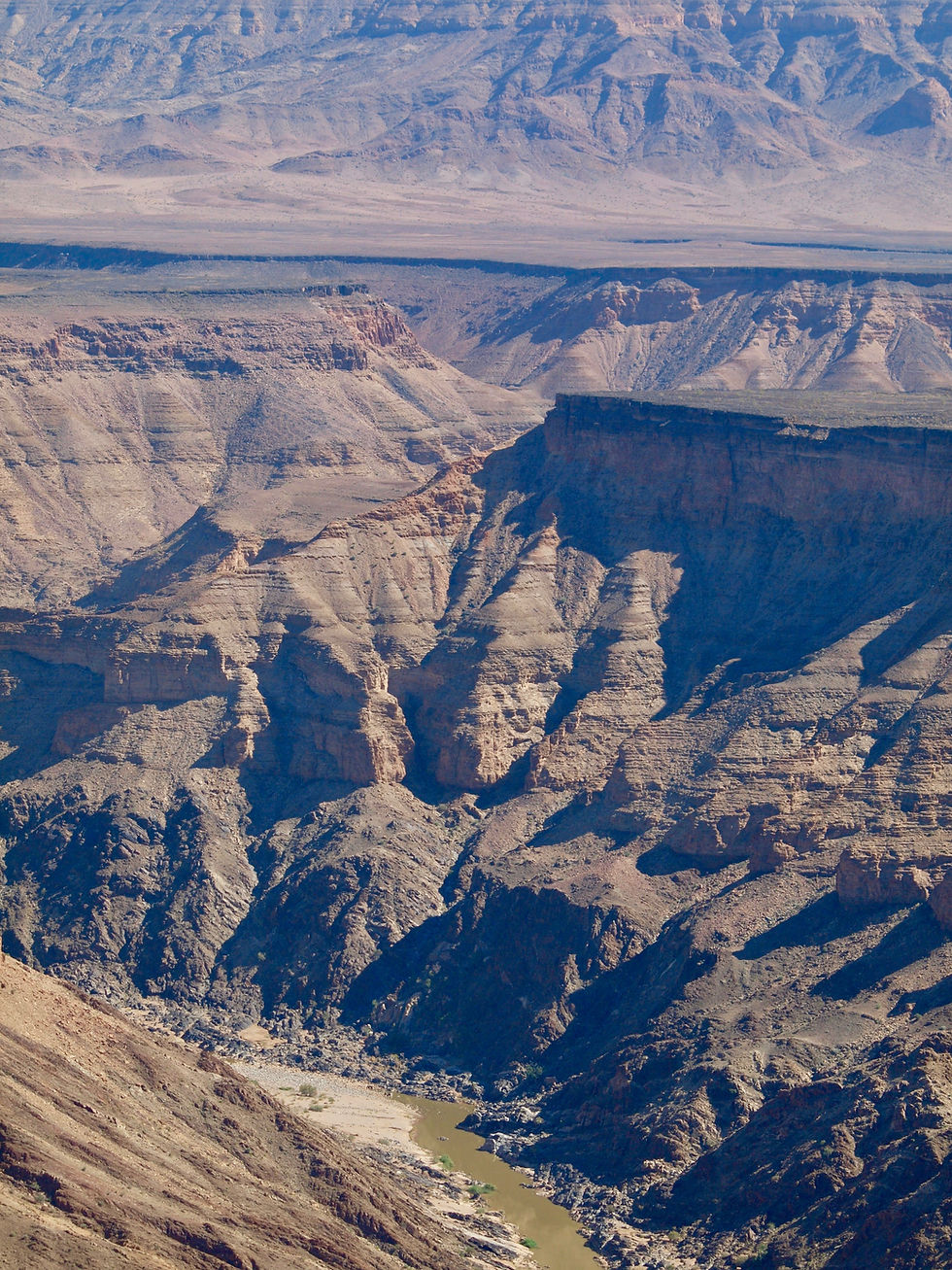



My hope for renting a 4 x4 in Namibia was now out of the question. We decided that if we were stopped or needed our licenses at the border we would play like dumb American tourists and say that the rental car company kept them. There was nothing else that we could do.


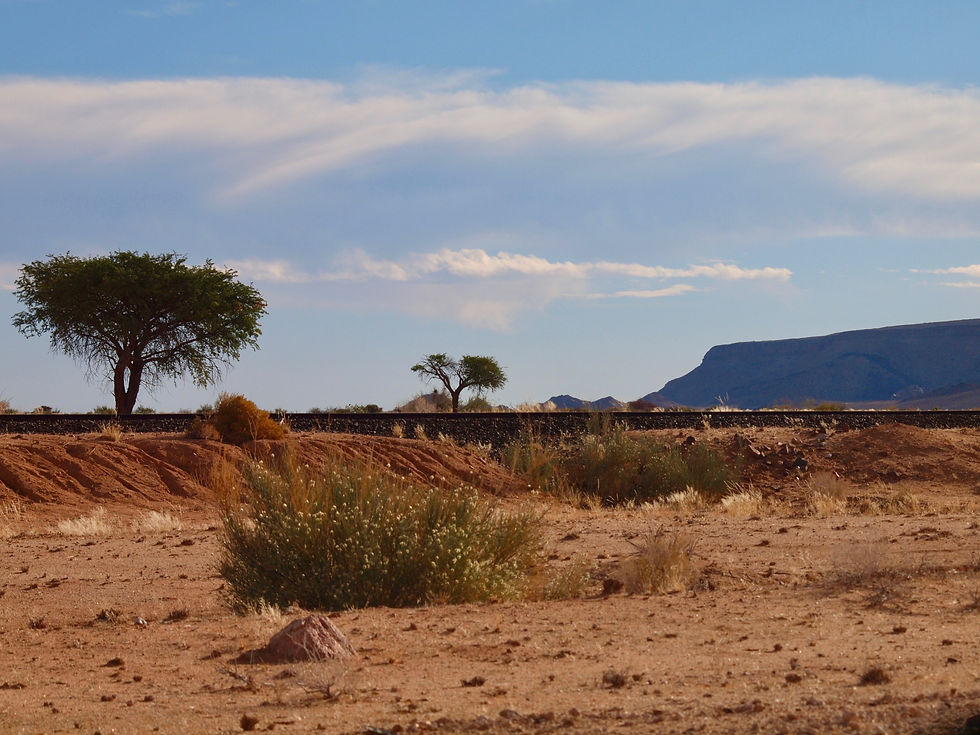


After a quick snack we decided to try our luck at the road block. In the worst case scenario we would stay in South Africa a little longer until we can get replacement licenses FedEx’d. When we exited the parking lot, the road block had miraculously switched to the other side of the highway! We were clear to proceed all the way to the border.


About fifteen minutes down the road Ol then mentioned that in all of the confusion we forgot to get gasoline and treats for the children. One of the things we do when traveling through the countryside is to buy small sweets like lollipops for the kids we see along the way. So after driving past the road block we had to turn back around. We pulled into a small convenience store with gasoline and found the shelves pretty empty.


No sooner had we pulled back onto the highway Ol said that what we needed was a big wholesale type store like Sam’s. Right then there appeared a big wholesale store! We stopped and loaded up on supplies, the suggested ten liters of water for a drive across a desert, snacks, and large bags of lollipops.



Our road trip was back on track! The border crossing at Nakop into Namibia was easy. We had to pay a small road fee and we were relieved that they did not ask to see our driver’s licenses.


I had read about the roads and self-driving in Namibia on several blogs. There are many horror stories about the nightmare that driving across Namibia can be. The country has a rating system for it’s roads. The roads are rated A, B, C D, and F and are labeled as such on signs and maps.








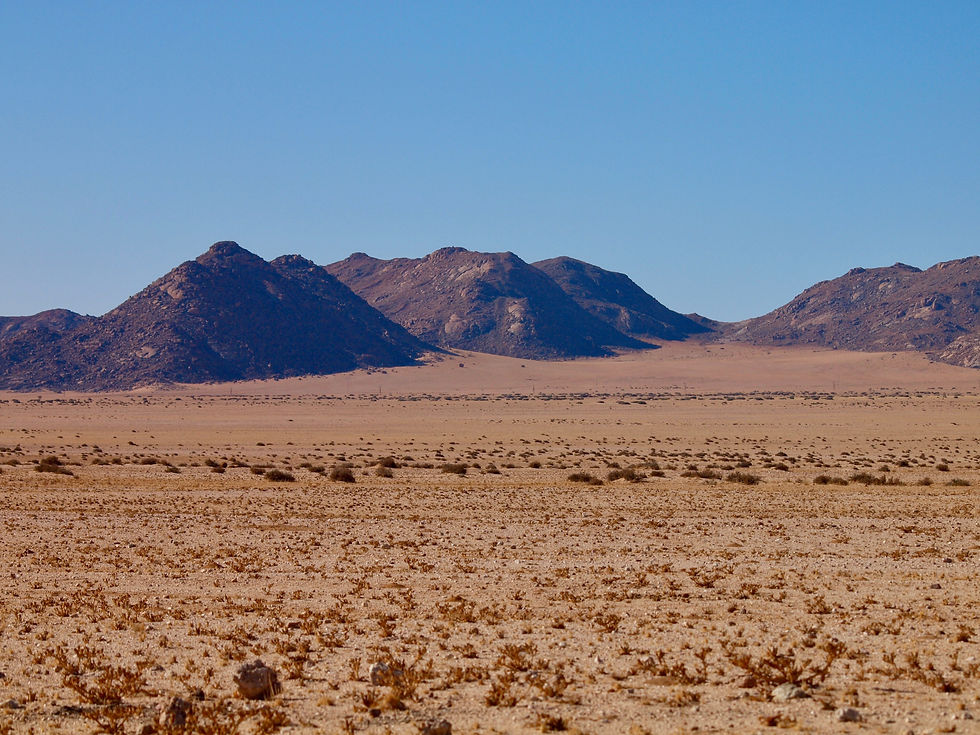

There are a few A roads in the Capitol of Windhoek and these are modern, paved four lane highways. Roads with a B marking are paved two lane highways usually connecting various cities or towns, these roads are in very good condition on par with two lane highways in the United States. C roads are dirt, gravel and sand, but still grated regularly, they can be rough but are generally well maintained. D roads are also dirt, gravel and sand but are only maintained periodically like once every three months and four wheel drive vehicles are recommended.


An F road is a gravel road and generally a farm road with major potholes and large boulders and even with four wheel drive you may not make it to your destination. As someone else noted, if you find yourself on an F road in Namibia, you are F-#@%! If I could help it we would only be driving on B and C roads in our 2 WD Ford Eco Sport.


As we entered Namibia, I received a message on my Iphone from T-mobile, welcoming me to Namibia. The message stated Namibia is not in our telephone data service plan. My audible gasp almost caused Ol to wreck. In his defense we were looking out for zebra, springbok, and desert elephants crossing the road.



This was the first time in two years of travels that we were visiting a country not in our service plan. I didn’t even think to check beforehand. Thankfully I had my newly crumbled Namibia road map on my lap. If we got into real trouble we had our satellite ResQlink device, but if we had car trouble we were out of luck. This is why it is recommended that vehicles be stocked with three days of food and water!



Namibia is South Africa’s northern neighbor. It is the driest country in Sub-Saharan Africa and is basically a large desert with it’s western coastline bordering the Atlantic Ocean. Because of the desert, Namibia is the second least densely populated country in the world. It borders South Africa, Botswana, Angola, Zambia and Zimbabwe. In the Zambezi River in the north four countries borders come together. It is the only place in the world where four countries come together at one point.



Namibia is also home to the largest canyon in Africa, the Fish River Canyon National Park which was our first destination.



Our plan was to see how far we felt like driving and then to use our booking.com app to make a reservation for the night. Now that we had no cell service, that plan was out the window. At least we made it across the border! We also needed to adjust our driving times. With the sand blowing across the road and the wildlife, what should take only a few hours on a map, we now needed to double.



We were pleasantly surprised when we turned off the B3 and onto the C12, our first C road. It was doable in our little car. We just had to proceed a bit more slowly.



Most surprising was that we had only seen one other car since we entered the country. It is difficult to describe the vastness and emptiness that is the interior of Namibia. We could drive for hours and be lucky to see another vehicle. There were no homes or businesses along the roads and there were no people anywhere. We were in the middle of a desolate but beautiful landscape. I now understood the need for three days of supplies!



Finally, after many hours of driving without seeing any sign of civilization, in the distance, a few buildings appeared alongside the road like a mirage. It was a hotel roadside complex. When we finally arrived at the Canyon Roadhouse, we felt like we were back in the U.S. on Route 66 in the southwestern desert. Cool old cars and trucks were used as props and decorations for the rustic luxury lodge. It was late afternoon and we were exhausted from driving all day. We asked about vacancy as we had no reservations. We checked` in and ordered a meal. Namibia was full of surprises! I wasn’t expecting the western lodging or the American food.



After a couple of hamburgers, we decided that we had time to see the sunset in the Canyon which was listed as fifteen kilometers away. The hotel clerk said that we would never make it, which of course made us try.


After barreling down a rough C road at 100 kph, we made it just as the last glow of sunlight hit the canyon rim. We enjoyed a nice glass of wine and the last of sun’s light on the canyons walls. We drove back to the hotel, praying that we didn’t run into any animals. We were now breaking the number one rule in Namibia everyone told us to follow, don’t drive at night!


Thankfully we made it back to the hotel safely and enjoyed a quiet night. The next day we woke up to another beautiful day and a flat tire! The good news was that we were staying at the only tire repair place in one hundred kilometers. While fixing the flat, we met a young couple who were also fixing tires on their vehicle. They were in a 4x4 and they had already had three flat tires in two days. This didn’t bode well for us in our small car.



The young man who changed and repaired our tire recommended that we purchase another tire when we made it to the next city. He said the likelihood of us getting two flats at once was pretty high. I didn’t like the way he was shaking his head and whistling as he asked us again, if this was the car we were driving through his country. I could tell that he felt sorry for us, and after giving him a few lollipops he told us our best hope was to let a lot of the air out of our tires. He told us that Namibia has the sharpest rocks in the world (how come I never read about that). He also counseled Ol to not go over 40 kilometers per hour on C roads. It wasn’t just me nagging!


Patched up and deflated we drove off to explore the canyon. We met a few adventurous college students from the US and Canada at the viewpoint. We had a great visit catching up with young folks from home. It was also fun to discover later that our paths would cross again in our trip across Namibia.


After the Canyon, we drove another full day to the coastal town of Luderitz and Diaz point, a point of land where Bartholomew Diaz planted a cross to mark his voyage around the Cape of Africa. We stopped along the way to feed the Feral Horses of the Namib Desert. I went down and donated some apples to a pile of greens that was next to a waterhole. The wild desert horses that we passed along the roadway were beautiful to watch.







The drive was treacherous at times as we had to wait for a bulldozer to scoop the sand off the road. The incredible dunes are constantly moving and switch from one side of the road to the other. We were glad that we weren’t in a rush, and after a month in South Africa had already adopted the motto of "Hakuna Matata” which we all know from “The Lion King” means “no trouble” or “no problems” in Swahili.



We were on Africa time! Polli Polli (slowly, slowly). Thank goodness, because the views were so breathtaking that we kept stopping to take photos.
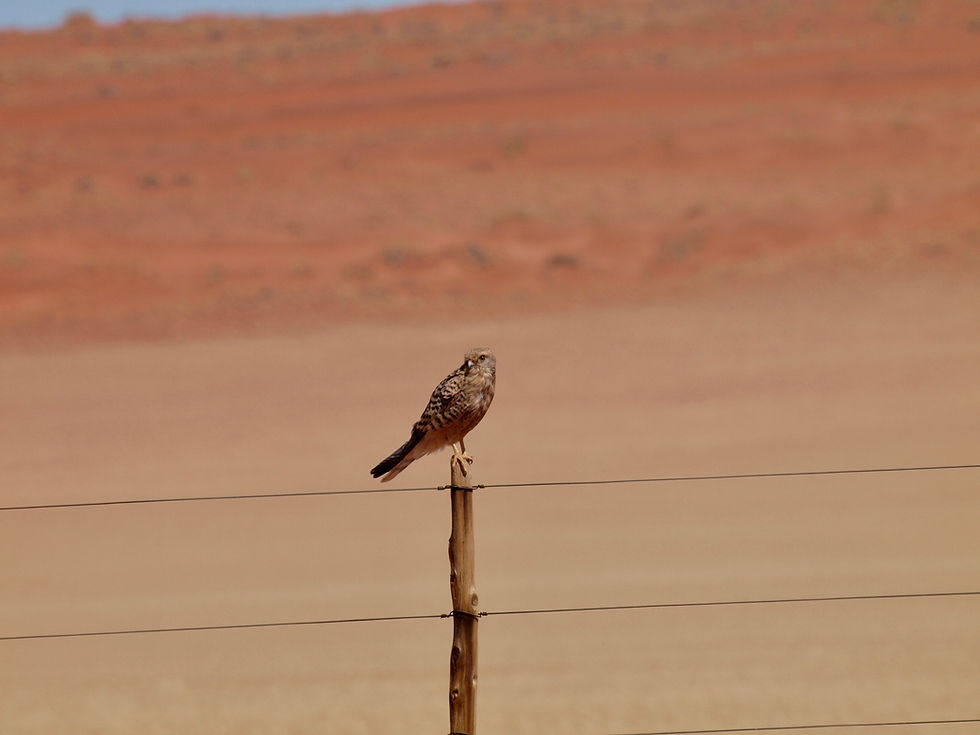


After discovering our little guest house had great wifi, we enjoyed an incredible meal of seafood at a wonderful Portuguese restaurant. We decided to stay an extra day in the harbor town of Luderitz.



The town is known for its colonial architecture on one of the least hospitable coasts in Africa. While we were there we took a boat tour and visited the original Diaz landing site from 1487, the lighthouse, and the area that is a habitat to sea lions, penguins, ostriches, and flamingoes.



Just outside Luderitz is the Kolmanskuppe Ghost Mining Town. The abandoned buildings are a photographers dream. After our tour I became obsessed with looking for diamonds, while Ol took photos until closing time. Apparently with the moving desert and waves from the beach, some of the best quality diamonds in the world are found here. I was already planning our next visit.


Feeling well rested and caught up on our chores, we got back on the road early for our drive to Sossusvlei. Our boat Captain suggested that we take a different route than we had originally planned. He recommended the D 707. Driving a D road would break one of our self imposed rules. However, the captain promised that it was the most scenic drive in the country. In all fairness I can’t remember if we told him about the small car we were driving, because it was a D road!


He did say that not all C and D roads were created equally. If a road is a C road and well travelled it can be worse than a D road. He promised that this road would be worth the extra time. Of course with my anxiety in mind, I could imagine us stranded for days with no cell service. We both agreed that a bit of danger just adds to a road trip and if anything we would have another good adventure story.
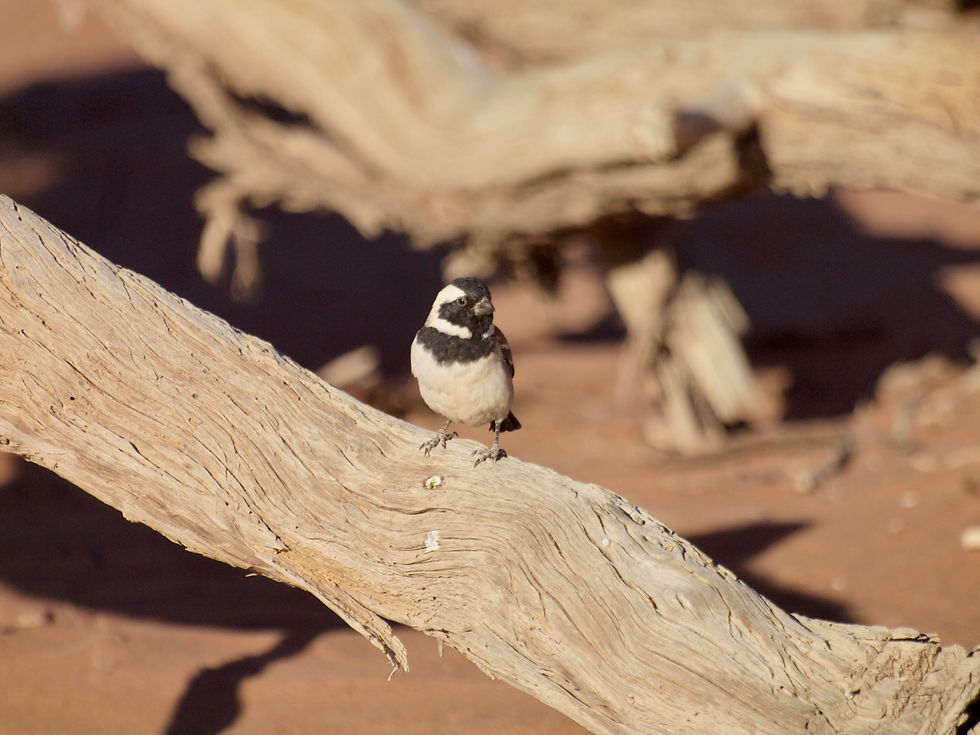
The road was rough, and in places sand covered the entire roadway, but our car handled it just fine. There were a few places we got bogged down, but Ol gunned it and we fish tailed it until we were back on firmer ground. Ol was becoming quite the Namibian driver.




Unfortunately, as beautiful as the pictures are, they were unable to truly capture the vast beauty of this area. It was stunning and overwhelming. The D707 took us hours to traverse, though it was barely an inch on the map. We couldn’t help stopping to look at the wildlife, the rock and sand formations, and the stunning trees and bird nests.

Once again, we pulled into our destination just before dark. We were staying at Sossusvlei Lodge and decided to raid our trunk wine cellar for the lovely sunset from the roof of the lodge which overlooked the areas watering hole.


I loved our private chalet, even though the animal tracks around it were a little discomforting. We had a wonderfully romantic dinner and breakfast. I sampled some of the tastiest meat of my life at the wild game chef station. I still can’t believe that Kudu is better than the best prime filet I had ever tasted. Have I said how much I love Namibia yet?


The entrance to Sossuslvlei was in Namin-Naukulft National Park, just a two minute drive from our lodge. We were amazed by the stunning landscapes and stopped at all the lookout points along the way.


Sossusvlei is a famous salt and clay pan surrounded by high red dunes in the southern part of the Namib desert. The road in the park was paved and the large dunes for hiking were clearly marked. We decided not to hike Dune 45 because we wanted to hike the dune “Big Daddy” `by Dead Vlei instead.

When we reached the end of the pavement, there was a parking area. The National Park had 4x4 vehicles to shuttle the hikers to Dead Vlei. Rather than attempting to describe this remarkable, otherworldly landscape, I will let Ol’s pictures speak for themselves.


It was hard work to climb the dunes, but going down was much more fun. I felt like a kid again and it was the first time in years that I have done something so challenging with no knee pain! If it wouldn’t have been as hot as it was, I would have climbed up again, just to run down.


We decided against buying the extra spare tire when we found out it would displace our wine stash in the cool confines of the trunk. We figured that we were now one third of our way across Namibia and so far good fortune has been on our side.

I don’t want to jinx it but I can hardly wait to see what the rest of this road trip will bring, even if it is another flat tire.

Comments